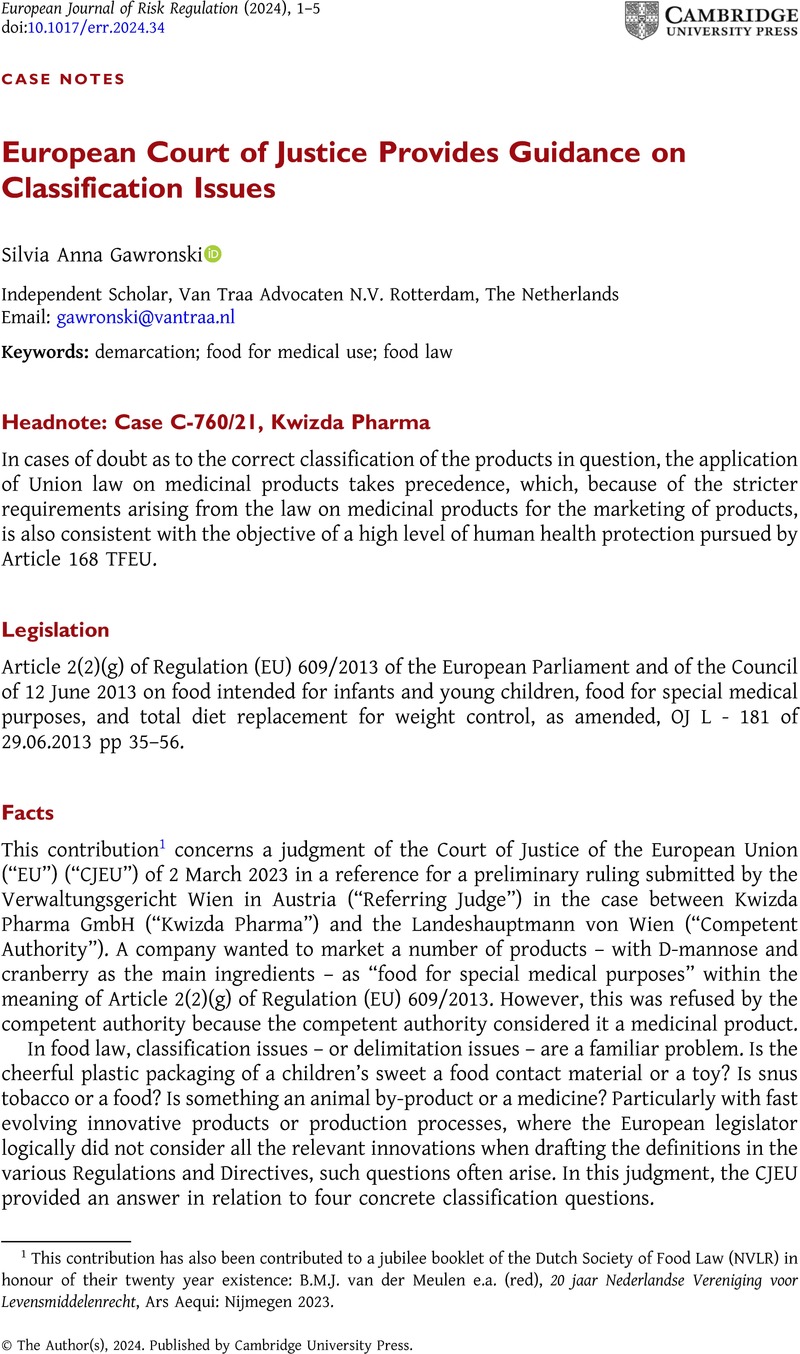No CrossRef data available.
Article contents
European Court of Justice Provides Guidance on Classification Issues
Published online by Cambridge University Press: 27 May 2024
Abstract
An abstract is not available for this content so a preview has been provided. Please use the Get access link above for information on how to access this content.

- Type
- Case Notes
- Information
- European Journal of Risk Regulation , Volume 15 , Special Issue 3: Special Issue on the Evolving Nature of the Rule of Law in International Economic Law , September 2024 , pp. 772 - 776
- Copyright
- © The Author(s), 2024. Published by Cambridge University Press
References
1 This contribution has also been contributed to a jubilee booklet of the Dutch Society of Food Law (NVLR) in honour of their twenty year existence: B.M.J. van der Meulen e.a. (red), 20 jaar Nederlandse Vereniging voor Levensmiddelenrecht, Ars Aequi: Nijmegen 2023.


